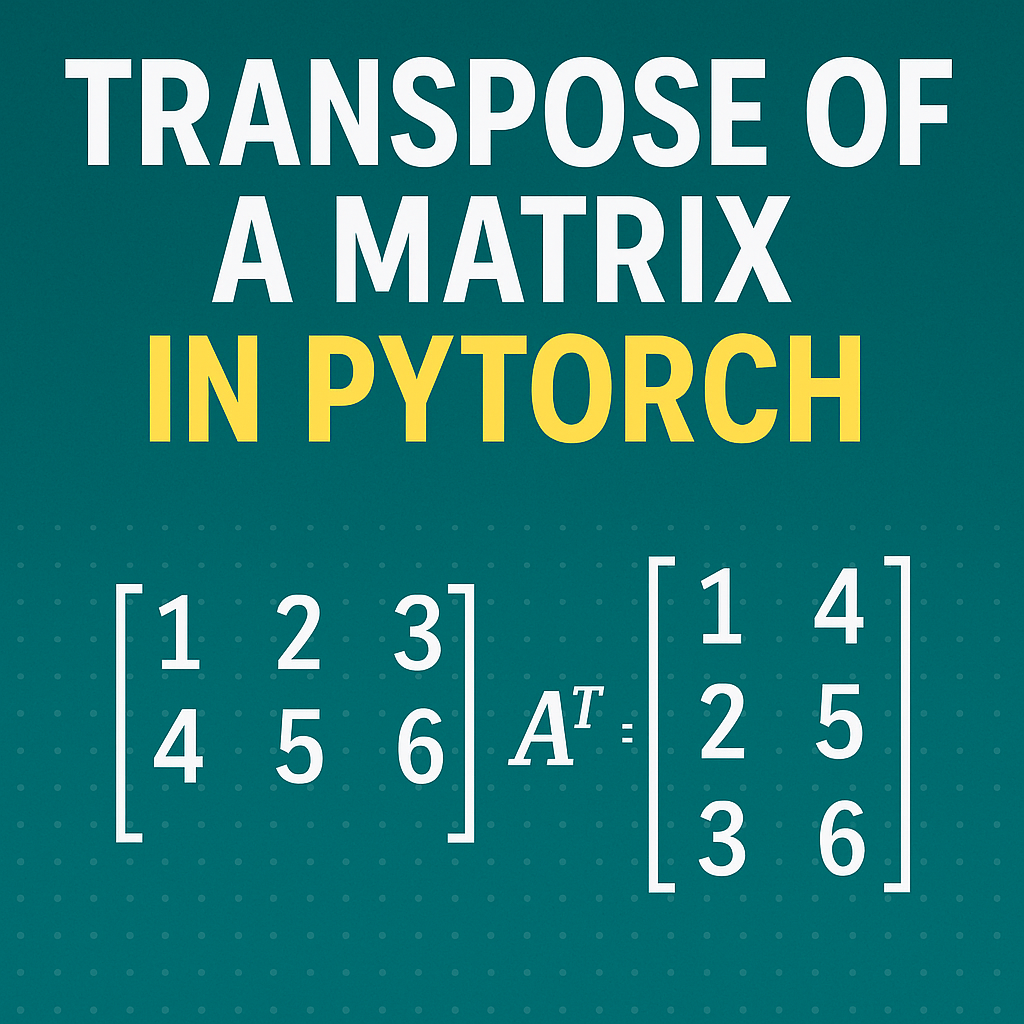Transpose of a Matrix in PyTorch
Transpose of a Matrix Author: Bindeshwar Singh Kushwaha Institute: PostNetwork Academy What is the Transpose of a Matrix? The transpose of a matrix \( A \), denoted \( A^T \), is obtained by interchanging rows and columns. If \( A = \begin{bmatrix} 1 & 2 & 3 \\ 4 & 5 & 6 \end{bmatrix} \), […]
Transpose of a Matrix in PyTorch Read More »
